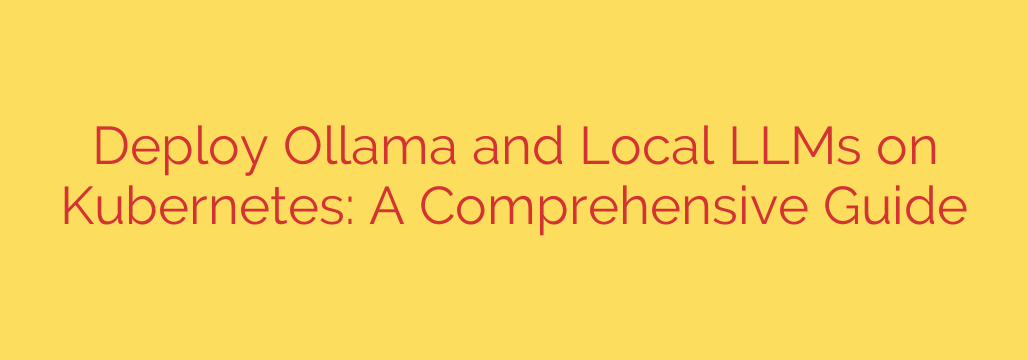
Unlocking the power of local AI models requires robust infrastructure. For organizations leveraging large language models (LLMs), particularly with tools like Ollama for serving, deploying these capabilities effectively is paramount. A Kubernetes cluster provides the ideal foundation, offering unparalleled scalability, resiliency, and efficient resource management, especially for demanding tasks like AI inference.
Bringing Ollama and its integrated LLMs into a Kubernetes environment involves several key steps. Initially, ensuring your cluster is correctly configured, particularly if utilizing GPUs for accelerated inference, is crucial. This often requires specific drivers and Kubernetes configurations to expose GPU resources to your workloads.
The core of the deployment involves packaging the Ollama service within a container image. This allows for seamless integration into the Kubernetes orchestration system. Kubernetes manifests, such as Deployments and Services, are then defined to specify how the Ollama container should run, how many replicas are needed, and how it can be accessed within or outside the cluster.
Handling the local LLM models themselves is another critical aspect. Depending on size and update frequency, models can be integrated into the container image, pulled by Ollama at runtime, or managed via persistent storage solutions like Persistent Volumes (PVs) and Persistent Volume Claims (PVCs), ensuring model availability across pod restarts and scaling events.
Once deployed, Kubernetes takes over, managing the lifecycle of the Ollama pods. This includes automatic restarts in case of failures, scaling up or down based on demand (potentially using Horizontal Pod Autoscalers based on CPU or GPU utilization), and intelligently scheduling pods onto nodes with available resources.
The benefits of this approach are substantial. Centralized management simplifies operations. High availability is built-in, as Kubernetes ensures the desired number of Ollama instances are always running. Efficient GPU utilization is achieved by sharing these valuable resources across multiple AI workloads. This strategic deployment allows teams to productionize and scale their local LLM initiatives with confidence, delivering powerful AI capabilities reliably. Mastering Kubernetes deployments for AI services like Ollama is a critical skill for modern data and AI platforms.
Source: https://collabnix.com/running-ollama-on-kubernetes/








